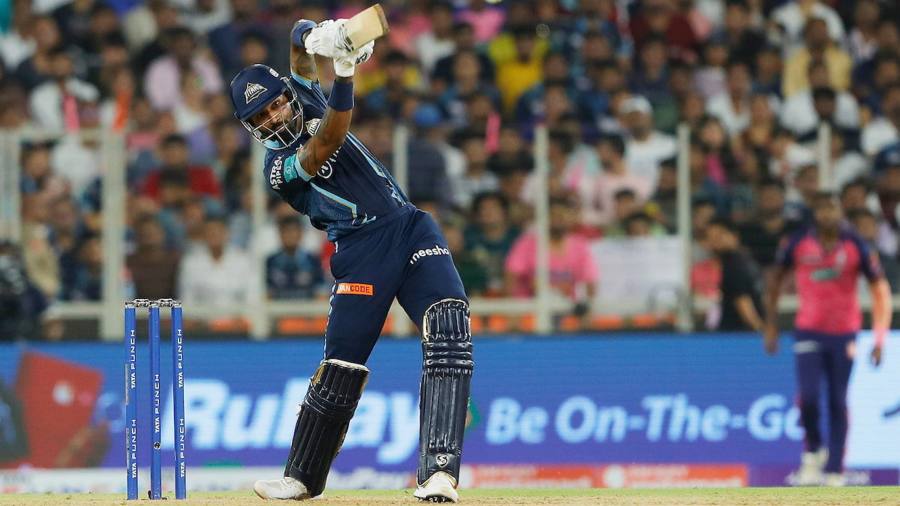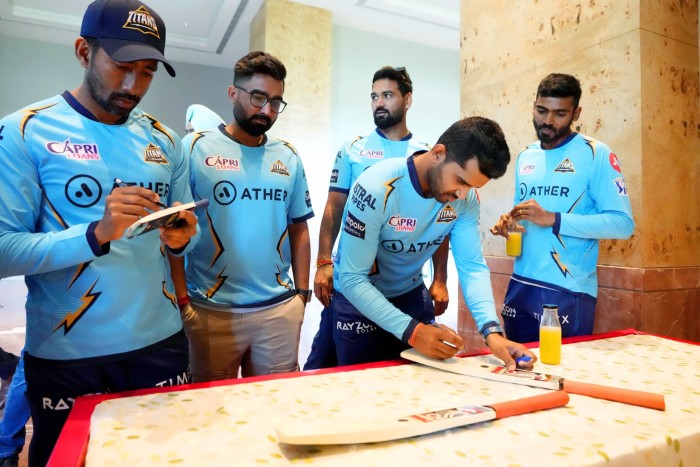
Much more will be at stake than winning a cricket match on Friday, when Indian all-rounder Hardik Pandya and his Gujarat Titans take on the Chennai Super Kings — whose star players include England’s Ben Stokes —for the opening fixture of the Indian Premier League.
A game played in front of as many as 100,000 fans in Ahmedabad will showcase the first fully fledged, nationwide edition of the IPL, the world’s glitziest and most lucrative cricket tournament, since 2019, after the pandemic led to years of compressed seasons played in a handful of venues.
But the new season will also launch a fierce contest beyond the pitch. After a five-season monopoly on the IPL rights, US entertainment giant Walt Disney will be battling with newcomer Viacom18 — a partnership between Mukesh Ambani’s Reliance Industries, Paramount and an investment group run by James Murdoch and former Disney executive Uday Shankar — for viewers and advertisers, after losing the streaming rights at a record-breaking $6.2bn auction last year.
Disney, which will still broadcast the competition on TV, had used its command over the IPL to build one of India’s most successful media businesses. This included its lucrative Star TV network, India’s largest, as well as its Disney+ Hotstar streaming platform, which with more than 50mn subscribers grew far larger in India than competitors like Netflix.
However, Viacom18 wants to use the competition to build India’s leading digital media brand. Its deep-pocketed largest owner Reliance has long used aggressive discounting and price wars to muscle into new business areas.
Viacom18 is preparing “an all-out assault on TV”, according to one person familiar with the plans, including by streaming the competition for free on its JioCinema platform in order to undercut Disney’s pay-TV model. It is also courting advertisers and has hired several former Star executives, analysts add.
Viacom18 wants JioCinema “to become the default destination for most people,” the person said. “That’s why [the company] decided to remove the barriers to access. It’s a bold call.”
Since it was launched in 2008, the IPL has become the world’s leading domestic cricket tournament. The shorter Twenty20 format — in which games last around three hours compared to five-day test matches — proved well-suited to television audiences, attracting the world’s best players and hundreds of millions of viewers.
Advertisers, broadcasters and investors have flocked to the 10-team league, whose franchise owners include a suite of Indian conglomerates as well as foreign investors such as CVC Capital Partners, who spent $750mn for the Gujarat franchise in 2021.
The importance of the IPL to media groups was laid bare when Disney and Viacom18 each spent around $3bn last June for the 2023-2027 TV and digital rights respectively. Those record-breaking sums turned the IPL into the world’s second-most valuable sports tournament on a per match basis.
This translated into an immediate windfall for team owners, who are protected from player wage inflation by a salary cap even as income from the rights doubled. Those revenues “will be significantly higher for the teams,” said Mike Fordham, former head of the Rajasthan Royals franchise. “They will be even more profitable than they already are.”
For Disney and Viacom18, however, this battle could prove costly. While the rights outlay has surged, analysts and executives expect advertising revenues to remain flat as an economic slowdown weighs on corporate advertising budgets.
Media Partners Asia, a consultancy, estimates that this IPL season will attract around $550mn in advertising revenues — while the cost of the total rights to the media groups is equivalent to $1.2bn per year.
“It’s a very, very difficult proposition for these two broadcasters to make positive cash flows out of this,” said Santosh N, managing partner of valuation firm D and P Advisory.
Yet for Viacom18 and Reliance, holding the IPL’s digital rights is a valuable tool in the conglomerate’s longstanding efforts to build businesses around digital services and sports.
Reliance, whose core business is oil refining, has in recent years expanded into telecoms and its operator Reliance Jio has grown into one of the world’s largest with around 400mn subscribers. Reliance also owns an IPL franchise, the Mumbai Indians, and JioCinema already streamed the Fifa World Cup in India last year along with the inaugural edition of the Women’s IPL this month.
Viacom18 hopes to use free access to the IPL to build mass appeal before introducing packages to charge customers for premium content, such as Paramount’s suite of Hollywood blockbusters, the person familiar with the strategy said. Viacom18 did not respond to a request for comment.
Vivek Couto, MPA’s executive director said: “I don’t think Jio and its partners regarded [the IPL] as anything but a loss leader . . . sports is a loss leader anywhere in the world. It builds a platform and it builds viability.”
Disney, however, will be “playing defence,” Couto argued. Disney+ Hotstar’s subscriber base has already fallen from 61.3mn to 57.5mn in the last three months of 2022. It is also set to lose premium content from HBO, which was previously hosted on the streaming platform in India.
“We have always been a dominant leader in the broadcast space,” Disney India said, adding that its Star Network reaches more than 700mn viewers a month. It added that the “impact of losing IPL on our digital platform is largely being addressed through our entertainment offering across tent-pole movies, shows and marquee Cricket events like ICC World Cup and Asia Cup”.
A person familiar with Disney’s strategy acknowledged that its streaming platform will lose a “very small amount” of subscribers as digital viewers tune into JioCinema to watch the IPL.
But the company is betting that television will prove more resilient for advertisers at a time when marketing budgets are under pressure.
The person added: “television in India is a mature market, it offers you reach, which allows you to command a superior advertising dollar.”
